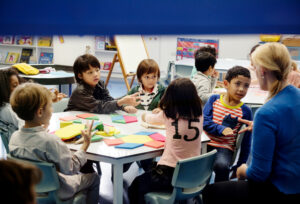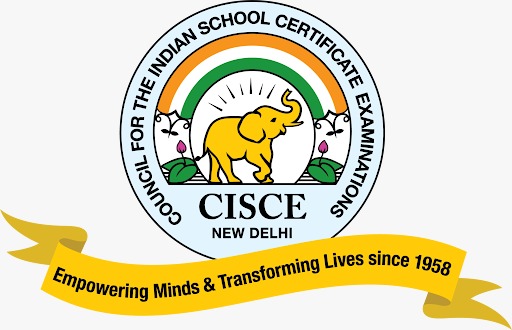Introduction: Embracing the Uniqueness in Every Learner
Every child is unique—and so is the way they learn. In a primary school classroom, educators encounter a vibrant mix of personalities, backgrounds, and abilities. Understanding different learning styles isn’t just a teaching strategy; it’s a key to unlocking each student’s full potential.
From the visual learner who thrives on charts and colors to the kinesthetic learner who grasps concepts through movement and touch, knowing how children learn best helps schools create a more inclusive, engaging, and effective learning environment. Schools like Cambridge schools in Whitefield exemplify this approach by offering globally recognized, learner-centered frameworks.
What Are Learning Styles?
Learning styles refer to the preferred ways individuals absorb, process, and retain information. While every student can learn through multiple modes, most tend to gravitate toward one or two dominant styles.
The most commonly recognized types include:
- Visual Learners: Prefer images, charts, and spatial understanding.
- Auditory Learners: Learn best through listening, discussions, and verbal instructions.
- Kinesthetic Learners: Grasp information through hands-on activities and movement.
- Reading/Writing Learners: Absorb material through reading text and writing notes.
These styles are not rigid boxes but rather helpful indicators that guide how teachers can differentiate instruction and make learning more accessible to every child.
Why Are Learning Styles Important in Primary Schools?
Primary school is a foundational phase where attitudes toward learning are formed. Children develop cognitive, social, and emotional skills that shape their future academic paths. Catering to different learning styles at this stage helps to:
- Boost confidence: When students succeed using methods that suit them, they feel more capable and motivated.
- Enhance engagement: Varied instruction keeps students attentive and reduces classroom boredom.
- Improve comprehension: Students retain more when content is delivered in a format that resonates with their natural preferences.
- Promote inclusivity: Recognizing diverse learning styles ensures that all children feel seen and valued.
Educators committed to inclusive education use these approaches to create environments where every child—regardless of background or ability—can thrive.
How Teachers Can Identify and Adapt to Learning Styles
Recognizing how students learn best requires keen observation and thoughtful assessment. Teachers can identify learning styles in several ways:
- Classroom observation: Noticing how students respond to different activities. Do they light up during storytelling? Do they prefer drawing diagrams? Are they constantly in motion?
- Simple diagnostic tools: Short quizzes or games that explore preferences can reveal much about learning tendencies.
- Student reflection: Even young learners can be asked about what helps them remember things or what they enjoy most during lessons.
- Parental insights: Conversations with parents can provide context about a child’s learning behavior at home.
Once identified, the teaching strategy can be adapted accordingly:
- Visual learners benefit from mind maps, illustrations, and color-coded notes.
- Auditory learners engage well with storytelling, rhymes, and group discussions.
- Kinesthetic learners thrive in experiments, drama, building activities, or roleplay.
- Reading/writing learners do well with journaling, worksheets, and reading aloud.
It’s important to mix these methods regularly—not just for variety, but because students also benefit from exposure to all types of learning, building cognitive flexibility and adaptability.
Real-World Application: Learning Styles in Action
Let’s imagine a simple classroom lesson about the water cycle:
- Visual learners watch an animated video and use colorful posters.
- Auditory learners listen to a song or hear the teacher tell a story about rain and rivers.
- Kinesthetic learners use a 3D model to simulate evaporation and precipitation.
- Reading/writing learners read a short passage and complete a fill-in-the-blank worksheet.
This kind of multi-modal instruction ensures that every child engages in a way that suits them. Teachers also incorporate educational games to reinforce concepts through fun, hands-on challenges.
Learning Styles and Emotional Intelligence
Understanding learning styles is not just about academic performance—it also plays a vital role in emotional intelligence (EQ), especially in primary-aged children. When a child feels seen, understood, and supported in the way they learn, their self-esteem naturally grows.
- Children whose learning styles are recognized feel empowered and are more confident.
- They’re more likely to express their needs and seek help when they don’t understand something.
- They develop empathy when they understand that others learn differently.
Moreover, educators can pair learning preferences with emotional reflection—such as asking how students feel about an activity—fostering classrooms that grow both IQ and EQ.
The Role of Technology in Supporting Learning Styles
When used intentionally, digital tools can support different learning preferences:
- Interactive whiteboards and multimedia presentations support visual learners.
- Audiobooks and podcasts enrich auditory learners.
- Touchscreen apps and simulation games engage kinesthetic learners.
- Online journaling tools support reading/writing learners.
Schools implementing technology in classrooms are increasingly tailoring tech use to match student learning preferences, preparing children for a future where adaptability is essential.
Practical Tips for Supporting Different Learning Styles in the Classroom
Creating a classroom that supports all learning styles doesn’t mean designing a new lesson plan for each student. Instead, it involves building flexible, multimodal teaching practices that allow for varied engagement:
- Use multimedia: Combine visuals, audio, text, and interactivity.
- Offer choices: Let students decide how to showcase what they’ve learned (e.g., poster, story, presentation).
- Flexible seating and movement: Allow freedom to stand, stretch, or choose quiet corners.
- Project-based learning: Foster collaboration across learning styles.
- Rotate activity stations: Include reading, art, roleplay, and discussion-based activities.
Teachers can also link learning style strategies to broader curriculum goals like the IGCSE syllabus, ensuring global standards meet personalized learning.
Myths About Learning Styles
There’s growing debate around the scientific validity of rigid learning style models. Some researchers argue that labeling students can limit growth if taken too literally. However, in primary education, the value lies not in labeling, but in adapting.
- Many students are hybrid learners. They may switch preferences depending on the subject or context.
- Learning styles should not restrict instruction. Rather, they should enhance it.
- Exposure to all styles builds resilience. Students benefit from being challenged to adapt.
Ultimately, learning styles are tools—not boxes—to be used thoughtfully by teachers.
Conclusion: Learning Styles as the Foundation for Inclusive, Impactful Teaching
Understanding different learning styles is more than a classroom strategy—it’s a philosophy of recognizing the individuality in every child. When primary schools adapt teaching methods to accommodate various learning preferences, they do more than boost academic performance. They nurture confident, capable learners who enjoy the process of discovery.
In a world where personalization is becoming the norm in every field, education too must evolve. Embracing different learning styles is a key step toward making schools more responsive, empathetic, and impactful—values reflected deeply in schools that prioritize inclusive education and holistic development.
FAQs
The most common are visual, auditory, kinesthetic, and reading/writing. Many children show a blend of these preferences.
Observe how your child engages with tasks—do they prefer drawing, listening, moving, or reading? Teachers and learning style quizzes can also help identify preferences.
Yes. Children may develop new preferences as they grow and as their brains and interests mature. Flexibility is key.
If used rigidly, yes. But when approached as a flexible guide—not a fixed label—learning styles can greatly enhance engagement and understanding.
Not necessarily. The goal is to create multimodal lessons that incorporate different approaches so all learners benefit.







